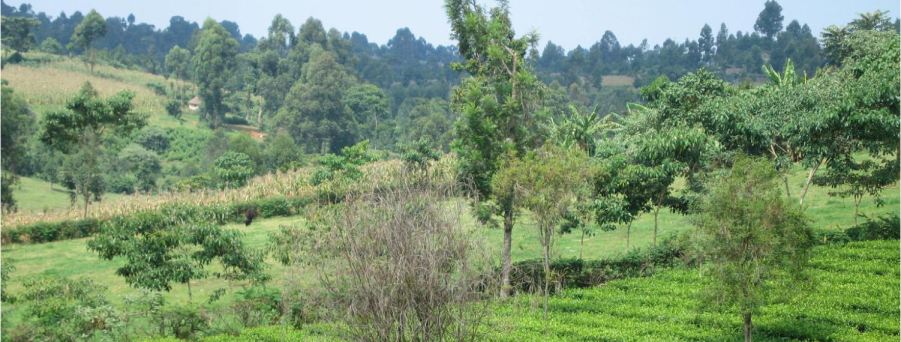|
Project Description |
Updates |
Our Team |
Media |
References |
Documents
|
| Project Description |
Fueling local economies and soil regeneration:
Biofuels and biochar production for energy self-sufficiency and agricultural sustainability |
Our project combines engineering, social science, and environmental science to advance knowledge in producing biofuels and biochar from local biomass, and analyze its feasability and impact in a rural African context. This boils down to three important questions:
- How can pyrolysis of biomass be linked to microbial processing to make biofuels and char from biomass?
- Optimize processes of biomass pyrolysis (thermal decomposition without oxygen) in a research kiln at Cornell and a prototype, field operational kiln for use in Kenya.
- Process exhaust gases from the pyrolysis kiln to make butanol biofuel using microbial processing.
- Model and optimize processes for biofuel quality and quantity and for biochar end products for use as a soil amendment.
- What level of biofuels production will local biomass resources allow?
- Take inventories of local biomass resources and potential for pyrolysis use in Kenya: agricultural residues, logging waste, sugar cane residues, and others.
- Generate scenarios for implementation of local initiatives with biofuels and biochar based on resource availability.
- What impacts on energy, economics, and the environment can be foreseen with analysis and modeling of adoption?
- Develop a baseline of household-level economic activities, labor allocation, and biomass production activities.
- Analyze household-level feasability of adoption : biomass production, labor allocation, and income generation.
- Analyze scenarios for biofuels markets and local distribution mechanisms.
- Analyze impacts of adoption on economic status, deforestation, and local and global carbon cycling using life-cycle analysis and other models.
|
| Background and Justification: Bio-energy and Biochar |
This research explores the opportunites and constraints to combine production of biofuels for local use in an African context and biochar for soil use with low-temperature pyrolysis. Three real-world issues justify this approach: (1) The need for rural land-users in Africa to generate additional household income and fuels to spread risk and allow transport for access to markets; (2) the necessesity to provide sustainable production systems that minimize soil degradation and increase efficiency of applied nutrients; and (3) the demand for solutions to global warming.
The proposed technology is low-temperature pyrolysis that yields butanol as an energy carrier (Meier and Faix 1999; Bridgwater et al. 2002). Feedstocks for pyrolysis may include a wide variety of biomass (Yaman 2004) such as logging waste, crop residues such as vegetable stalks or rice husks, and grass residues such as bagasse from the sugarcane industry. The key for securing environmental benefits is the production of biochar by-product during pyrolysis which can be applied to soil. |
Funding for the project is provided by a generous gift from philanthropist Yossie Hollander. |
Reading:
Laird D 2008 The charcoal vision: A win–win–win scenario for simultaneously producing bioenergy, permanently sequestering carbon, while improving soil and water quality. Agronomy Journal 100, 178-181.
Lehmann J.: 2007, 'Bioenergy in the black'. Frontiers in Ecology and the Environment 5, 381-387.
Lehmann, .J, Gaunt, J. and Rondon, M.: 2006, 'Bio-char sequestration in terrestrial ecosystems – a review', Mitigation and Adaptation Strategies for Global Change 11, 403-427.
Yaman, S.: 2004, 'Pyrolysis of biomass to produce fuels and chemical feedstocks', Energy Conversion and Management 45, 651-671.
Marris, E.: 2006, 'Black is the new green', Nature 442: 624-626.
Lehmann, J.: 2007, 'A handful of carbon', Nature 447, 143-144
|



